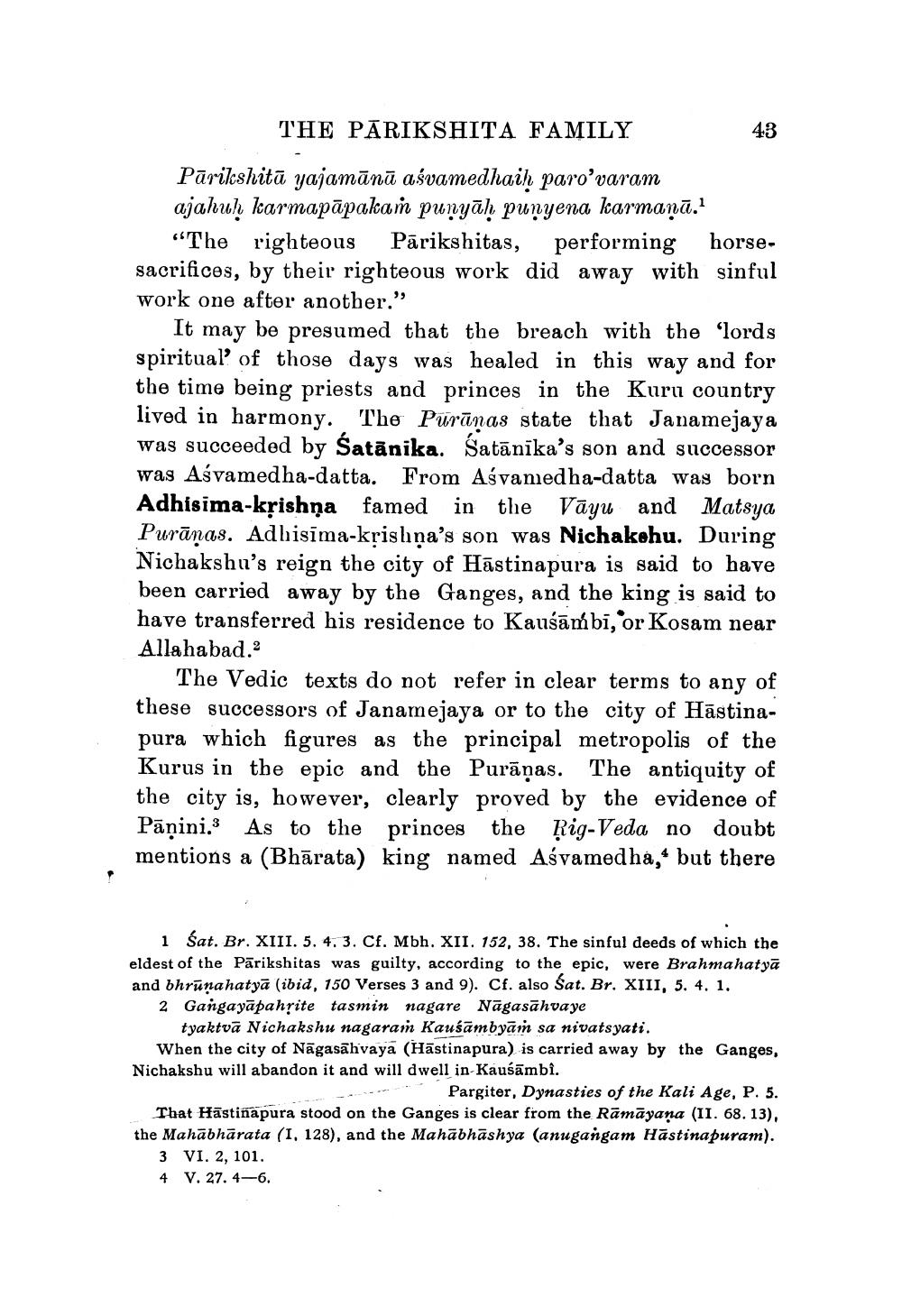________________
THE PARIKSHITA FAMILY
43 Pārilshitā yajamānā aśvamedhaih paro'varam ajahuḥ karmapāpakaṁ punyāh, punyena karmanā.
“The righteous Parikshitas, performing horsesacrifices, by their righteous work did away with sinful work one after another."
It may be presumed that the breach with the 'lords spiritual of those days was healed in this way and for the time being priests and princes in the Kuru country lived in harmony. The Purūnas state that Janamejaya was succeeded by Satānika. Satānīka's son and successor was Ašvamedha-datta. From Aśvamedha-datta was born Adhisima-ksishņa famed in the Vayu and Matsya Purānas. Adhisīma-krislıņa’s son was Nichakohu. During Nichakshu's reign the city of Hāstinapura is said to have been carried away by the Ganges, and the king is said to have transferred his residence to Kaušāmbī, or Kosam near Allahabad.2
The Vedic texts do not refer in clear terms to any of these successors of Janamejaya or to the city of Hāstinapura which figures as the principal metropolis of the Kurus in the epic and the Purāņas. The antiquity of the city is, however, clearly proved by the evidence of Pāṇini.3 As to the princes the Rig Veda no doubt mentions a (Bhārata) king named Aśvamedha," but there
1 Sat. Br. XIII. 5. 4. 3. Cf. Mbh. XII. 152, 38. The sinful deeds of which the eldest of the Pārikshitas was guilty, according to the epic, were Brahmahatyā and bhrūnahatyā (ibid, 150 Verses 3 and 9). Cf. also Sat. Br. XIII, 5. 4. 1. 2 Gangayāpahrite tasmin nagare Nāgasāhvaye
tyaktvā Nichakshu nagaram Kauśāmbyām sa nivatsyati. When the city of Nāgasāhvaya (Hāstinapura) is carried away by the Ganges, Nichakshu will abandon it and will dwell in-Kaušāmbi.
S . Pargiter, Dynasties of the Kali Age, P. 5. That Hāstinapura stood on the Ganges is clear from the Rāmāyana (11. 68. 13). the Mahābhārata (1, 128), and the Mahābhāshya (anugangam Hastinapuram).
3 VI. 2, 101. 4 V. 27.4–6.




